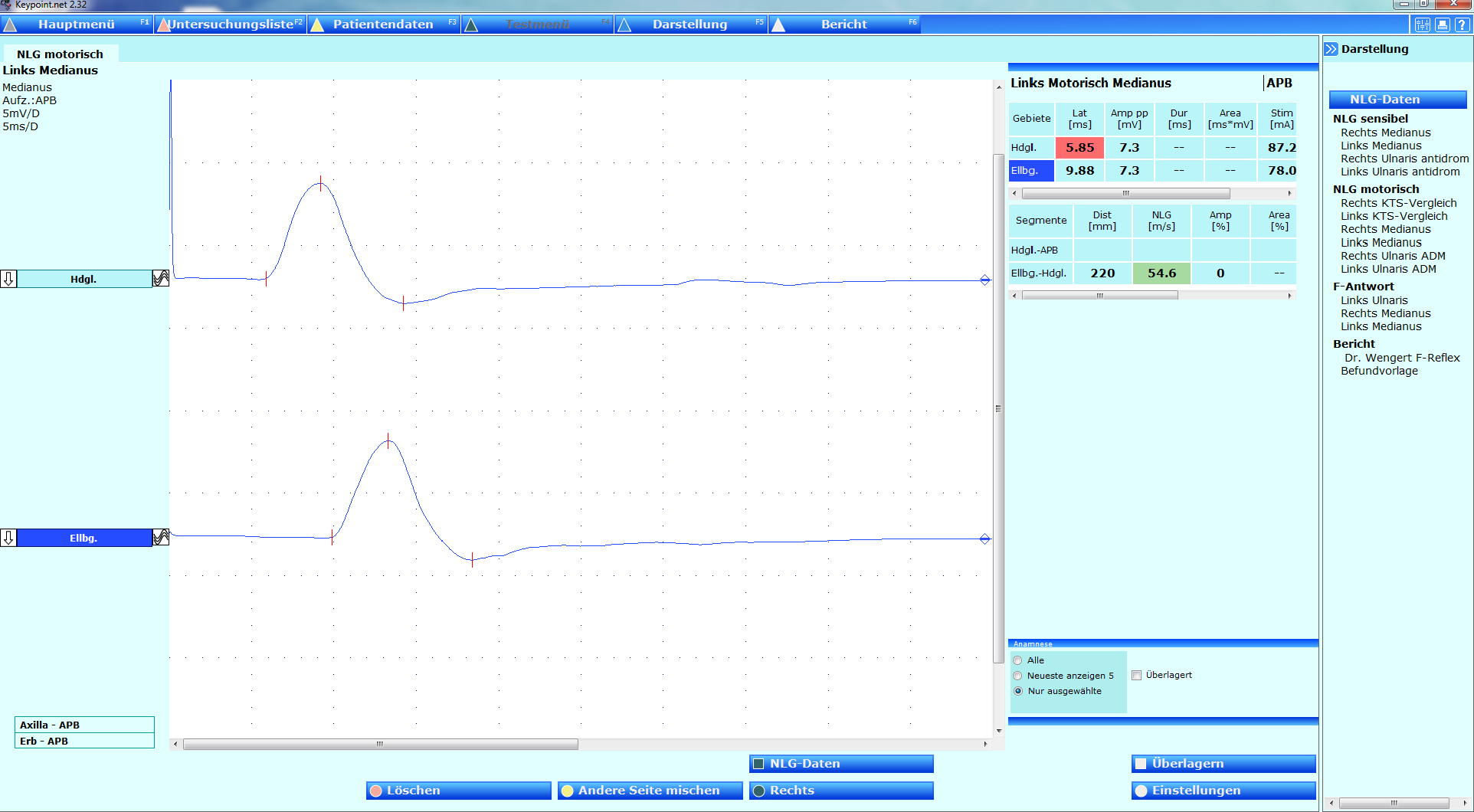

With an NCS examination the ability of electric conduction of the nerve fibers gets tested: how fast is the conduction velocity? How much of the signal is actually transmitted? Is the signal somewhere delayed or is there a block of conduction? Is there damage to a nerve? Where is the damage located? How severe is it?

- Polyneuropathy:Classes of polyneuropathy are distinguished by which part of the nerve cell is affected mainly: the axon (~wire of the cable) or the myelin sheath (~surrounding isolation of the cable). Which part of the nerve cell is affected can be clarified in a nerve conduction study. This gives very important information to decide on the cause of polyneuropathy and counsel on treatment options. – One of the most important questions, in my opinion, is to search for inflammatory causes. Because inflammatory polyneuropathies are oftentimes overlooked, do lead to irreversible nerve damage and gait disturbance, but on the other hand can very efficiently be treated (if the diagnosis is made early).
- Nerve injury:In the case of nerve injury, the degree of nerve lesions can be graduated based on electrodiagnostic testing (neurapraxia, axonotmesis, neurotmesis). Chances of spontaneous regeneration differ substantially between these different degrees of nerve lesions. This has implications for the planning of therapy.In this situation usually nerve conduction studies (NCS) are complemented by electromyography examination (EMG). Using EMG it can be shown, whether regeneration processes have already started and how they proceed over time.
- Nerve entrapment syndrome (“pinched nerve“) Nerve conduction studies are very helpful in confirming the diagnosis, quantifying the severity, and ruling out the involvement of other nerves. Are symptoms actually caused by nerve entrapment? Which nerve? Where exactly? Are nerve fibers irritated or damaged? How severe is the nerve damage? Is an operation necessary to release pressure on the nerve in order to restore nerve function?
- Disc herniation: The single most important question that can be answered using electrodiagnostic studies is, whether nerve fibers are merely irritated or whether nerve fibers are damaged. If nerve fibers are damaged, then there is a risk of developing neurological deficits. If nerve fibers are irritated, there is no such risk. Without electrodiagnostic testing, these situations can oftentimes not be differentiated from each other. Thus, in my eyes, the electric functioning of the nerves is the most important criterion to decide, whether an operation is necessary or not.

Next, the nerve is stimulated at one site through a hand-held electrode (see photo) placed on your skin. Each stimulus is small, very short lasting and absolutely safe. These impulses are recorded at a different site. Each electrical stimulation is recorded as a waveform on a computer and analyzed by the neurologist performing the test. Nerve conduction studies are done to determine if the nerve is conducting appropriately.




If there is anything that you feel is too uncomfortable please let me know – we can always stop the examination in this very second and discuss alternatives (nerve-sonography for example: www.nervenultraschall.de).
There are no serious side effects or risk of lasting deficits. The test is not invasive. The equipment used is extensively tested and is safe. In the case of a cardiac pacemaker or any other electrical medical device, I will avoid stimulation of points near to these devices (which is rarely indicated anyway). Before nerve conduction study you will be asked whether you do have a pacemaker. But even then there are no serious concerns: Cardiac pacemakers and implanted cardiac defibrillators are used increasingly and no evidence exists indicating that performing routine electrodiagnostic studies on patients with these devices pose a safety hazard.


More informations www.nervenultraschall.de (german language)
Here you can make an appointment for a diagnostic.
Do not hesitate to contact us.
Phone 030 797 88 90-0


